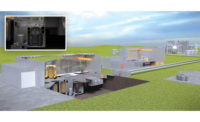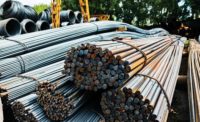After years of cross-border dispute over water pollution stemming from British Columbia mining activity, the U.S., Canada and the Ktunaxa Nation have agreed to added steps to reduce contamination in the Elk and Kootenai River watershed in southeastern B.C., northern Idaho and Montana.
Actions under the pact wlll be managed by the International Joint Commission, the Biden Administration announced in mid March.
“We are taking long-awaited, collaborative action to address pollution and restore clean water for the region,” said Brenda Mallory, chair of the White House Council on Environmental Quality,
In a statement, the commission said a new "collaborative governance body" will manage a contamination mitigation "action plan" that will include "transparent and coordinated transboundary knowledge sharing on contaminants of concern; areas and water and ecological resources affected; and trends."
One company sensitive to the issue is B.C.-based Teck Resources Ltd. Three years ago, its subsidiary Teck Coal Ltd. was fined $44 million, the largest-ever penalty assessed under Canada’s Fisheries Act, for unlawfully depositing pollutants into the Elk River. A nearly $12 million fine was levied last year for delayed construction of a required water treatment plant.
Teck’s own research showed a significant drop in certain trout populations because of coal mining operations.
The Elk Valley has one of the world's highest quality deposits of metallurgical coal used in steelmaking for building and transportation infrastructure. The firm says on its website that it is a major exporter of steelmaking coal
Teck noted in a March 14 sustainability report construction of four water treatment facilities in the Elk Valley, with capacity “to treat 77.5 million liters of water per day at our steelmaking coal operations," as part of its Elk Valley Water Quality Plan, developed in 2014.
Since 2019, Teck is required to update the plan every three years. A 2022 update, now under review by B.C. government regulators, proposes to add new and expanded treatment facilities every one to two years through 2042. In 2022, Teck said it invested in improving mining practices and source control to reduce selenium, nitrate and sulphate being generated.
Source control efforts may reduce the amount of treatment capacity required in the future. Nitrate is released from explosives used during rock blasting. Teck notes expansion of its effort begun in 2016 to line blast holes to prevent nitrate leakage. The firm also is expanding use of natural bacteria to consume selenium and sulphate that are released from waste rock, recently building a waste rock pile at its mining site that limit air within the waste rock pile.
In addition to more than $1 billion toward water quality management and completion of the four treatment facilities Teck said it will invest up to $408 million by the end of 2024 in selenium cleanup, with six new water treatment facilities to be built by 2027.
These will involve construction of earthen dikes, channels, piping and other physical barriers to divert clean water awy from waste rock. “The plan is working, selenium concentrations have stabilized and are now reducing downstream of treatment,” Teck added.
This was challenged by Casey Brennan, executive director of Wildsight, a British Columbia environmental group, which claims that Teck monitoring statistics show no significant cut of selenium concentrations during active treatment at its West Line Creek facility from 2022 to 2023.
Montana has been particularly hard hit by selenium discharge from B.C.-based mining . In 2019, the U.S. Environmental Protection Agency reported elevated levels of selenium in fish and water in Lake Koocanusa that straddles the U.S.-Canada border.. The state earlier adopted its own site-specific water quality standard for selenium at the international boundary, to safeguard fish species
Teck also noted in its 2024 sustainability report that as part of an advanced emissions reduction plan to be net-zero by 2050, it had built and commissioned last year a carbon capture utilization and storage pilot project at its Trail, B.C operations site.





Post a comment to this article
Report Abusive Comment